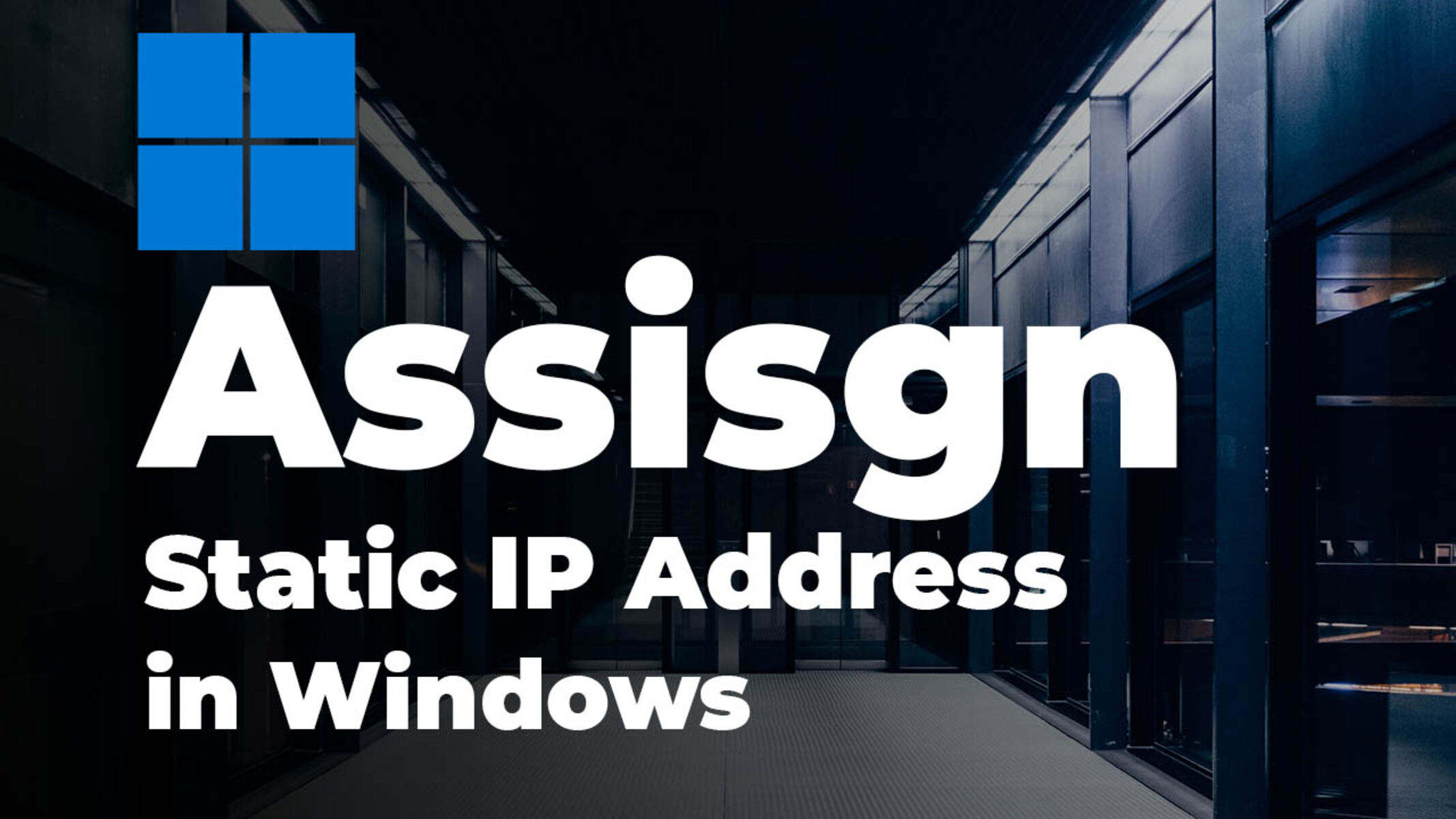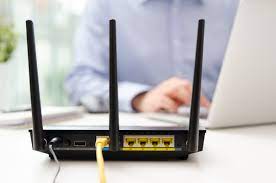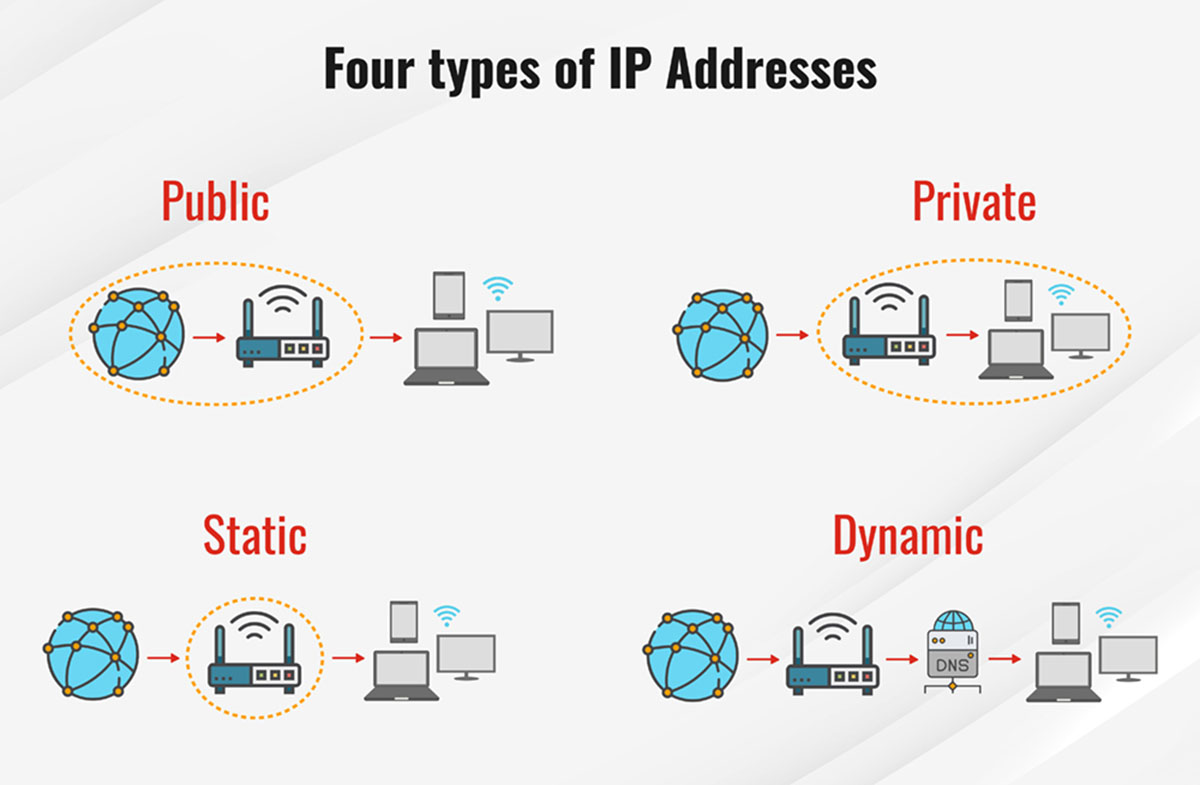Introduction
When it comes to network configurations, one of the essential components is the assignment of IP addresses. An IP address is a unique identifier that allows devices to communicate with each other over a network. In the early days of networking, IP addresses were manually assigned, but as networks grew larger and more complex, this approach became impractical.
To automate the process of IP address assignment, the Dynamic Host Configuration Protocol (DHCP) was introduced. DHCP is a network management protocol that dynamically assigns IP addresses to devices on a network. This protocol simplifies the administration and maintenance of IP address configurations, making it an invaluable tool for both small home networks and large enterprise environments.
IPv4, the most widely used version of the Internet Protocol, has limitations in terms of available IP address space. IPv6 was developed to overcome these limitations and provide a practically unlimited number of unique IP addresses. Both IPv4 and IPv6 are supported by DHCP, allowing for seamless integration with various types of networks.
Using DHCP offers numerous benefits. It eliminates the need for manual IP address management, which reduces administrative overhead and the likelihood of configuration errors. DHCP also provides flexibility in terms of IP address assignments, allowing devices to obtain addresses dynamically or through reservation. Furthermore, DHCP allows for the configuration of additional parameters, such as DNS servers and gateway addresses, simplifying network setup.
This article will explore how DHCP works, its lease time concept, the ability to reserve specific IP addresses, the use of DHCP relay agents, and the different options that can be configured with DHCP. Additionally, alternative methods for IP address assignment will be discussed. By understanding the fundamentals of DHCP and its advantages, network administrators can create efficient and scalable network infrastructures.
DHCP (Dynamic Host Configuration Protocol)
The Dynamic Host Configuration Protocol (DHCP) is a network protocol that enables the automatic configuration of IP addresses for devices on a network. It simplifies the process of IP address allocation, ensuring that each device on the network has a unique identifier to facilitate communication.
DHCP works on a client-server model, where a DHCP server manages the IP address pool and assigns addresses to requesting devices. When a device, known as a DHCP client, connects to the network, it sends a DHCP request to the DHCP server, which then responds with the necessary network configuration information, including the IP address, default gateway, subnet mask, and DNS servers.
This protocol operates using a lease-based system. When a DHCP client receives an IP address from the server, it is essentially leasing that address for a specific period of time, known as the lease time. The client must renew or release the lease before it expires to continue using the assigned address. This allows the DHCP server to efficiently manage and allocate IP addresses to devices. If a client’s lease expires and it fails to renew or release it, the IP address can be reclaimed by the DHCP server and made available for other devices.
One of the advantages of DHCP is its ability to reserve specific IP addresses for devices in a network. This is useful for devices that require a consistent IP address, such as servers or network printers. With DHCP reservation, a specific IP address is permanently assigned to a particular device based on its unique identifier, such as its MAC address. This ensures that the device always receives the same IP address, even if it disconnects and reconnects to the network.
DHCP Relay Agents are used when a DHCP server and client are not directly connected to the same network segment. These agents forward DHCP messages between the client and server, allowing DHCP to be used across different network segments. This is particularly useful in large networks or environments where VLANs are implemented.
Overall, DHCP simplifies IP address management and configuration in networks of all sizes. By automating the assignment and renewal of IP addresses, DHCP enhances network scalability and reduces administrative overhead. Whether it’s a home network or a complex enterprise environment, DHCP plays a crucial role in ensuring efficient communication between devices.
IPv4 vs. IPv6
IPv4 (Internet Protocol version 4) and IPv6 (Internet Protocol version 6) are two different versions of the Internet Protocol used for identifying and communicating with devices on a network. Though IPv4 has been widely used since its inception, the limitations of its address space prompted the development of IPv6 with its vastly larger address pool.
IPv4 addresses are 32 bits long and expressed in four sets of numbers ranging from 0 to 255, separated by periods. This format allows for approximately 4.3 billion unique IP addresses. While this may seem like an abundant number, with the proliferation of internet-connected devices, the available IPv4 addresses are becoming increasingly scarce.
On the other hand, IPv6 addresses are 128 bits long and expressed in eight sets of four hexadecimal digits, delimited by colons. This format results in a staggering number of unique IP addresses: approximately 3.4 x 10^38, which is more than enough to accommodate the exponential growth of connected devices.
In addition to the increased address space, IPv6 introduces several improvements over IPv4. IPv6 offers enhanced security features, more efficient routing, and the ability to autoconfigure addresses without the need for DHCP. The autoconfiguration aspect of IPv6 allows devices to generate their own IP addresses based on predefined rules, simplifying network setup and eliminating the need for manual IP address assignments in many cases.
Despite the advantages of IPv6, IPv4 continues to dominate the internet. This is primarily due to the vast infrastructure already in place that relies on IPv4 addresses. In order to facilitate the transition from IPv4 to IPv6, various mechanisms have been developed, such as dual-stack, tunneling, and translation techniques. These mechanisms enable devices to support both IPv4 and IPv6, ensuring compatibility with existing networks while enabling the adoption of IPv6.
As network administrators plan for the future, it is crucial to consider the transition to IPv6 to overcome the limitations of IPv4. By adopting IPv6, organizations can take advantage of its improved scalability, security, and autoconfiguration capabilities, ensuring that their networks can accommodate the growing demands of the digital age.
Benefits of Using DHCP
Using DHCP (Dynamic Host Configuration Protocol) offers numerous advantages in network management and IP address assignment. Let’s delve into some of the key benefits:
1. Simplified IP Address Management: DHCP eliminates the need for manual IP address assignments. Instead, it allows for the automatic allocation of IP addresses to devices on a network. This significantly reduces administrative overhead and minimizes the chances of configuration errors, making network management more efficient.
2. Flexibility in IP Address Assignments: DHCP provides flexibility in how IP addresses are assigned to devices. It supports both dynamic and reserved IP address assignments. Dynamic IP addressing allows devices to obtain an IP address automatically when connected to the network, while reserved IP addressing allows for the allocation of specific IP addresses to devices. This provides the ability to ensure certain devices always receive the same IP address, which can be crucial for devices requiring consistent network configurations, such as servers or network printers.
3. Efficient Resource Utilization: With DHCP, IP addresses are effectively managed through the lease-based system. Each device is assigned an IP address for a specific lease time. If a device no longer needs the IP address or disconnects from the network, the address is released and can be reused for other devices. This efficient utilization of resources helps to optimize the allocation and availability of IP addresses within a network.
4. Centralized Network Configuration: DHCP allows for the centralized management and configuration of network parameters. In addition to providing IP addresses, DHCP can distribute other critical network information, such as subnet masks, default gateways, and DNS server addresses, to connected devices. This streamlines the network setup process and ensures consistent and accurate configurations across the entire network.
5. Easy Integration with Network Services: DHCP seamlessly integrates with other network services. It supports the automatic assignment of DNS server addresses, enabling efficient name resolution on the network. DHCP can also be used in conjunction with DHCP relay agents to enable IP address assignment across different network segments, ensuring smooth connectivity across larger networks.
In summary, DHCP simplifies network management, provides flexibility in IP address assignments, optimizes resource utilization, allows for centralized configuration, and integrates seamlessly with other network services. These benefits make DHCP an essential protocol for efficient and scalable network infrastructure.
How DHCP Works
DHCP (Dynamic Host Configuration Protocol) operates on a client-server model and follows a series of steps to assign IP addresses to devices on a network. Understanding how DHCP works is crucial for managing IP address assignments effectively. Here’s an overview of the DHCP process:
1. DHCP Discover: When a device, known as a DHCP client, is connected to a network, it sends out a broadcast message called a DHCP Discover. This message is a request for an IP address and other network configuration information.
2. DHCP Offer: Upon receiving the DHCP Discover message, one or more DHCP servers on the network respond with a DHCP Offer. The offer includes an available IP address from the DHCP server’s IP address pool, along with other configuration details like the subnet mask, default gateway, and DNS server addresses.
3. DHCP Request: Upon receiving the DHCP Offer(s), the DHCP client selects one offer and sends a DHCP Request message to the specific DHCP server. The client confirms its acceptance of the offered IP address and configuration information.
4. DHCP Acknowledgment: The DHCP server, upon receiving the DHCP Request message, confirms the assignment of the IP address to the DHCP client. The server sends a DHCP Acknowledgment message to the client, which includes the lease duration for the IP address.
5. DHCP Lease: The DHCP client now has a valid IP address and associated network configuration information. The IP address is leased to the client for a specific lease time, which defines the duration for which the client can use the IP address. Before the lease expires, the client may renew or release the IP address to the DHCP server.
6. IP Address Renewal: As the lease time approaches expiration, the DHCP client may attempt to renew its lease by sending a DHCP Request to the original DHCP server. If the server grants the renewal request, the client continues to use the same IP address and renews the lease. If the lease is not renewed, the client will eventually release the IP address.
7. IP Address Release: If the DHCP client no longer requires the IP address or if it disconnects from the network, it can release the IP address by sending a DHCP Release message to the DHCP server. This allows the DHCP server to reclaim the IP address and make it available for other devices.
This process ensures the efficient allocation and management of IP addresses within a network, enabling devices to easily obtain the necessary network configurations without manual intervention. By automating the IP address assignment, DHCP simplifies network management and ensures smooth communication between devices on the network.
DHCP Lease Time
In the world of DHCP (Dynamic Host Configuration Protocol), the lease time refers to the duration for which an IP address is assigned to a device. When a device connects to a network and receives an IP address from a DHCP server, it essentially leases the address for a specific period. Understanding the concept of lease time is essential for effectively managing IP address assignments. Here’s what you need to know:
1. Lease Duration: The lease time specifies how long a device can use the assigned IP address. It is negotiated between the DHCP client and server during the IP address assignment process. The lease duration can vary depending on the network configuration and DHCP server settings, ranging from a few minutes to several days or even weeks.
2. Lease Renewal: As the lease time nears expiration, the DHCP client has the option to renew its lease on the IP address. This involves sending a DHCP Request message to the DHCP server, indicating its desire to continue using the same IP address. If the server approves the renewal request, the lease duration will be extended, allowing the client to retain the same IP address for an extended period.
3. IP Address Release: If a DHCP client no longer needs the assigned IP address or disconnects from the network, it can release the IP address voluntarily. Releasing the IP address involves sending a DHCP Release message to the DHCP server, notifying it that the IP address is no longer in use. Upon receiving the release, the DHCP server can reclaim the IP address and make it available for assignment to other devices.
4. Lease Expiration: If a DHCP client fails to renew its lease before it expires or does not release the IP address, the lease will eventually expire. When the lease expires, the DHCP server considers the IP address as available for reassignment. At this point, another device connecting to the network can be assigned the previously leased IP address.
5. Lease Time Considerations: The lease time should be carefully configured to strike a balance between IP address utilization and network efficiency. A lease time that is too short may result in frequent address renewal requests and DHCP server communication overhead. On the other hand, a lease time that is too long may lead to IP addresses being reserved for longer than necessary, potentially causing address shortages.
6. Lease Time Management: Network administrators can manage lease times based on network requirements and device characteristics. For example, dynamically assigned IP addresses for short-lived devices or guest networks may have shorter lease times, while devices that require consistent configurations, such as servers, may have longer lease times or reserved IP addresses for extended periods.
Understanding lease times in DHCP is crucial for effectively managing IP address assignments and optimizing network resource allocation. By configuring appropriate lease durations, network administrators can ensure smooth communication, efficient utilization of IP addresses, and proper network maintenance.
DHCP Reservation
In DHCP (Dynamic Host Configuration Protocol), reservation refers to the process of permanently assigning a specific IP address to a device on a network. This ensures that the device always receives the same IP address, even if it disconnects and reconnects to the network. DHCP reservation provides numerous benefits for managing network configurations. Here’s what you need to know:
1. Consistent IP Address Assignment: DHCP reservation allows administrators to ensure that specific devices always receive the same IP address. This is particularly useful for devices that require consistent network configurations, such as servers, network printers, or network-attached storage (NAS) devices. By assigning a reserved IP address, network administrators can simplify device management and ensure seamless connectivity without the need for manual IP configurations.
2. Permanent IP Address Allocation: When a device has a DHCP reservation, the assigned IP address is permanently reserved for that device. Even if the device is disconnected and later reconnects to the network, it will always be assigned the same IP address. This eliminates the uncertainty and potential IP address conflicts that can arise from dynamic IP assignments.
3. Reservation Based on Unique Identifier: DHCP reservations are made based on a device’s unique identifier, such as its MAC address (Media Access Control address). The MAC address is a hardware-based identifier that is unique to each network interface card (NIC) in a device. By associating a reserved IP address with the MAC address, DHCP servers can identify and assign the correct IP address to the device whenever it connects to the network.
4. Simplified Network Management: With DHCP reservations, network administrators can easily identify and manage devices on the network. By assigning descriptive names or labels to reserved IP addresses, administrators can quickly recognize and track connected devices. This simplifies troubleshooting, device identification, and overall network management tasks.
5. Flexibility in Reservation Configuration: DHCP reservations can be configured to accommodate specific network requirements. Administrators can reserve IP addresses within the configured DHCP address range or outside of it, depending on their needs. This flexibility allows for the allocation of reserved addresses for devices with specific network configurations or for guests who need temporary access to the network.
6. Combining Reservation and Dynamic Assignment: DHCP reservations can be used in combination with dynamic IP address assignment. This means that while some devices have reserved IP addresses, other devices without reservations can still obtain IP addresses dynamically from the DHCP server. This allows for a mix of static and dynamic IP assignments to ensure efficient utilization of IP addresses while maintaining consistent configurations for certain devices.
Overall, DHCP reservation provides a powerful tool for network administrators to ensure consistent IP address assignments, simplify network management, and optimize device connectivity. By reserving IP addresses for specific devices, administrators can streamline network operations and enhance overall network performance.
DHCP Relay Agent
In large networks or environments where VLANs (Virtual Local Area Networks) are implemented, DHCP (Dynamic Host Configuration Protocol) relay agents play a crucial role in facilitating IP address assignment. A DHCP relay agent acts as a mediator between DHCP clients and DHCP servers that are not directly connected to the same network segment. This enables DHCP requests and responses to be relayed across different network segments, ensuring efficient IP address assignment. Here’s what you need to know about DHCP relay agents:
1. DHCP Client-Server Communication: In a typical DHCP scenario, DHCP clients send broadcast DHCP Discover messages to discover available DHCP servers. However, these broadcast messages are limited to the local network segment and cannot be routed across different segments. DHCP relay agents help overcome this limitation by forwarding DHCP messages between the clients and servers that are on different segments.
2. Relaying DHCP Messages: When a DHCP relay agent receives a DHCP Discover message from a client, it unicasts the message to one or more DHCP servers configured as relays. The DHCP servers then respond with DHCP Offer messages targeted at the relay agent’s IP address. The relay agent forwards these offer messages back to the client, allowing the client to select an IP address and complete the DHCP process.
3. Multiple Relay Agents: In networks with multiple network segments, there can be multiple relay agents deployed to ensure DHCP message propagation. These relay agents work together to forward DHCP messages across the network, ensuring that all DHCP clients can reach the DHCP servers and receive IP address assignments.
4. VLAN Support: DHCP relay agents are especially useful in networks using VLANs. VLANs divide a physical network into multiple logical segments, and DHCP relay agents help DHCP clients on different VLANs obtain IP addresses from the appropriate DHCP servers. This consolidates IP address assignment management and avoids the need for dedicated DHCP servers in each VLAN.
5. DHCP Relay Agent Configuration: DHCP relay agents need to be configured to specify the IP addresses of the DHCP servers to which they will forward the DHCP messages. Additionally, relay agents must be configured with interface associations, linking them to specific network segments or VLANs. This ensures that DHCP messages from clients on a particular segment are correctly relayed to the corresponding DHCP server.
6. Broadcast Control: DHCP relay agents provide broadcast control capabilities. By default, DHCP messages are broadcast, which can create unnecessary network traffic. Relay agents can be configured to convert broadcast messages into unicast messages, conserving network bandwidth and enhancing performance.
In summary, DHCP relay agents play a crucial role in facilitating IP address assignment in large networks or networks with VLANs. By bridging the gap between DHCP clients and servers on different network segments, relay agents ensure efficient communication and streamline IP address assignment processes.
DHCP Options
In addition to assigning IP addresses, DHCP (Dynamic Host Configuration Protocol) provides a mechanism for distributing various network configuration parameters to DHCP clients. These parameters, known as DHCP options, enable devices to obtain additional information that is essential for network connectivity and functionality. Here’s an overview of DHCP options and their significance:
1. DNS Server: One of the most commonly used DHCP options is the DNS (Domain Name System) server address. DNS translates human-readable domain names into IP addresses, allowing devices to locate resources on the internet. By providing DNS server addresses through DHCP, clients can automatically configure their DNS settings, eliminating the need for manual configuration.
2. Default Gateway: The default gateway is the network device that handles traffic between different networks or subnets. DHCP can distribute the IP address of the default gateway to clients, allowing them to set up the correct routing for communication with external networks. This ensures that devices can access resources beyond their immediate network segment.
3. Subnet Mask: The subnet mask is used by devices to determine the network portion and host portion of an IP address. DHCP can distribute the appropriate subnet mask to clients, ensuring they have the necessary network information for proper communication within the network.
4. Time Server: The time server option allows DHCP clients to obtain the network time from specified time servers. This is essential for accurate time synchronization across devices on the network, which is crucial for various applications, including logging, authentication, and time-sensitive operations.
5. NTP Server: Similar to the time server option, the Network Time Protocol (NTP) server option allows clients to synchronize their clocks with NTP servers. NTP ensures accurate and consistent timekeeping across devices, especially in environments that require precise timing, such as financial systems or scientific research.
6. TFTP Server: DHCP clients can be configured with the IP address of a Trivial File Transfer Protocol (TFTP) server. This option is useful for devices that require boot files or configuration files during the boot process. The TFTP server option simplifies the retrieval of necessary files, streamlining the device’s startup procedure.
7. Vendor-Specific Options: DHCP provides support for vendor-specific options that allow manufacturers to include additional configuration parameters specific to their devices. These options enable manufacturers to implement custom settings that enhance the functionality or integration of their devices within a network.
8. Custom Options: DHCP supports custom-defined options that can be configured based on specific network requirements. These options allow network administrators to distribute additional parameters not covered by standard DHCP options, meeting the unique needs of their network infrastructure.
By leveraging DHCP options, network administrators can streamline network configuration and ensure consistent settings across devices. DHCP options simplify the process of distributing critical network parameters, such as DNS server addresses, default gateway information, time synchronization, and more. This ensures efficient connectivity and simplifies network management tasks.
Alternatives to DHCP
While DHCP (Dynamic Host Configuration Protocol) is the predominant method for automatic IP address assignment, there are alternative approaches for network configuration. These alternatives offer different advantages and may be more suitable for certain scenarios. Here are a few alternatives to consider:
1. Static IP Address Assignment: One alternative to DHCP is manually configuring static IP addresses on each device. With static IP assignment, network administrators manually assign a unique IP address to each device. This method provides complete control over IP address assignments, ensuring fixed and predictable configurations. Static IP addressing is commonly used for servers, network devices with specific requirements, and when network configurations rarely change. However, it can be labor-intensive to manage, especially in large networks, and can lead to IP address conflicts if not properly maintained or documented.
2. APIPA (Automatic Private IP Addressing): APIPA is a feature available in some operating systems that enables automatic IP address assignment without the need for a DHCP server. When a device is unable to obtain an IP address from a DHCP server, it automatically assigns itself an IP address from the reserved range of 169.254.0.0/16. Although APIPA provides automatic address assignment, devices using APIPA are unable to communicate outside the local subnet. This limited functionality makes it suitable for small isolated networks or temporary network setups.
3. Manual IP Address Assignment: In situations where network configurations are simple and do not change frequently, manual IP address assignment can be a viable alternative. With this approach, network administrators manually assign IP addresses to devices without relying on DHCP. Manual assignment provides predictable configurations, avoids IP conflicts that can occur with DHCP, and reduces network traffic associated with DHCP lease renewals. However, manual IP address assignment can be time-consuming and prone to human error, making it less practical for large networks or environments with frequent device additions and changes.
4. Zero-configuration Networking: Zero-configuration networking protocols, such as Zeroconf or Bonjour, aim to simplify network configuration without the need for manual IP address assignment or a DHCP server. These protocols allow devices to assign IP addresses to themselves automatically and discover other devices on the network. Zero-configuration networking is beneficial for small networks or environments where simplicity and ease of use are prioritized. However, it may not be suitable for larger networks or those requiring advanced network configurations.
5. Static DHCP Mapping: Another alternative is to use DHCP with static DHCP mapping. With static DHCP mapping, specific MAC addresses are associated with fixed IP addresses in the DHCP server’s configuration. This allows devices to receive the same IP address each time they request an address from the DHCP server. Static DHCP mapping combines the convenience of automatic address assignment with the benefits of static IP configurations. It is particularly useful for devices that require consistent network settings, such as servers or network printers.
Choosing the most appropriate alternative to DHCP depends on the specific requirements of the network, the scale of the network, and the level of control and flexibility desired. Whether it’s manual IP address assignment, zero-configuration networking, or a combination of different methods, understanding the alternatives to DHCP helps tailor network configurations to best suit the needs of the environment.
Conclusion
DHCP (Dynamic Host Configuration Protocol) is an essential component of network infrastructure, providing automated IP address assignment and network configuration management. By automating the process of IP address allocation, DHCP simplifies network administration, reduces configuration errors, and enhances overall network efficiency.
In this article, we explored the key concepts and benefits of DHCP. We discussed how DHCP works, allowing devices to request and receive IP addresses from DHCP servers. We also examined the lease time concept, which determines how long a device can use an assigned IP address, as well as DHCP reservations, enabling specific devices to receive consistent IP addresses.
We touched on the role of DHCP relay agents, which facilitate IP address assignment in networks with multiple segments or VLANs. DHCP relay agents bridge the communication gap between DHCP clients and servers, ensuring DHCP messages reach the appropriate network segment or VLAN.
Additionally, we explored the significance of DHCP options, which allow for the distribution of various network configuration parameters to DHCP clients. DHCP options provide clients with essential information such as DNS server addresses, default gateways, and time servers, further enhancing network connectivity and functionality.
Finally, we discussed alternatives to DHCP, including static IP address assignment, APIPA, manual IP address assignment, zero-configuration networking, and static DHCP mapping. These alternatives offer different approaches to network configuration, catering to specific requirements and network environments.
In conclusion, DHCP is a valuable protocol that significantly simplifies IP address assignment and network configuration management. By implementing DHCP, network administrators can streamline network administration, optimize resource utilization, and ensure seamless communication among devices in the network.

























